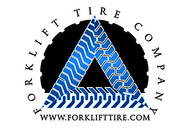10th Jul 2023
In the construction landscape, everyone is familiar with the fact that mini excavators need a sturdy set of tracks to get the job done. Whether you want a completely new set of tracks for mini excavation or you want to replace the mini excavator tracks, here’s a guide to make your decision easier, when it is about mini excavator tracks.
Understand the different types of tracks:
Before selecting the right mini excavator tracks, understand the different types available. There are two main types of tracks- rubber tracks and steel tracks. Rubber tracks are ideal for use on surfaces like concrete and asphalt, as they are less likely to damage these surfaces. Steel tracks, on the other hand, are better suited for rough terrain and heavy-duty jobs.
Consider the job site conditions:
Your job site conditions will play a significant role in determining the type of tracks you should choose. If you are working on a job site with loose soil, mud, or snow, rubber tracks would be the better option, as they provide better traction and are less likely to get stuck. Steel tracks are more suitable for job sites with rocks, gravel, and other hard surfaces.
Check the weight and size of your mini excavator:
The weight and size of your mini excavator will also determine the type of tracks you need. Rubber tracks are more suitable for lighter mini excavators, while steel tracks are better suited for heavier excavators. Additionally, the width of your mini excavator's tracks will determine how much pressure is exerted on the ground, hence affecting its performance.
Look at the tread pattern:
The tread pattern is another essential factor when choosing mini excavator tracks. The tread pattern is crucial for determining the terrain type suitable for the tracks. For instance, tracks with deep treads are ideal for mud and snow, while those with shallow treads are better suited for rocky terrain.
Determine the expected lifespan:
The expected lifespan of the tracks is also a vital factor to consider. Rubber tracks typically last for two years or 1,5000 hours, while steel tracks can last up to 4,000 hours. However, the lifespan of your tracks will depend on the job site conditions, the weight of your mini excavator, and how well you maintain them.
Measuring the excavator tracks
If you want to get the right size of tracks for mini excavators, you need these three key measurements, including:
- The pitch of the track, which is the distance between the center of one link (lug) to the center of another
- The track’s width in millimeters
- The total number of track links
Track size= track pitch x track width x total links
Conclusion
Mini excavators are not toys; they are workhorses, and if you want your excavator to prove its mettle on the site, selecting the right track is imperative. Undoubtedly, these tips can help, but if you want your mini excavator tracks to last in the long run, don’t forget to prioritize maintenance and care.






